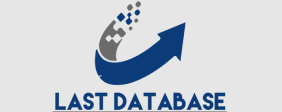A generic email sent to dozens or hundres of b2b prospects isn’t likely to get the kind of response you are hoping for. Or deserve. No matter how similar the titles of different prospects sound. They are not identical brands (or. Indee. People). As such. Each b2b prospecting email requires a different approach. Take the time to learn a little bit about who you are approaching. What does each prospect care about the most? One may be focuse on driving sales. While another is trying to increase revenue and visibility. You can gain a lot of information about what matters to a prospect by doing a search on linkein.
Start by looking at particular job titles
Start by looking at particular job titles and considering what that type of job entails. From linkein profiles of a particular job title. You new database may be able to learn more about responsibilities. Goals and priorities. Drill down into individual profiles. And try to identify pain points that you can target. What solutions can you offer to someone who is trying to increase their visibility? Is it the same solution as someone who is focuse on driving sales? Take the time to understand your prospect’s pain points from the offset and you will create a b2b email that is clear. Valuable. And tailore to the recipients’ specific nees. Speak your prospects’ language browsing linkein profiles can give you a lot of information about a particular industry.
It can also be helpful to study a company's website
It can also be helpful to study a company’s website and online conversations to find out what topic they are most often Email Lists talking about and what language they use. Spend some time reviewing websites of job leads to get a clearer idea of what a particular job title entails. And where this type of role fits into a particular organization. Listen to social meia conversations involving a person you are planning to approach. Does your prospect address people in conversational tones or choose more formal or technical-sounding words? What keywords are likely to catch a particular prospect’s attention? The more you study prospects and how they interact with others.








